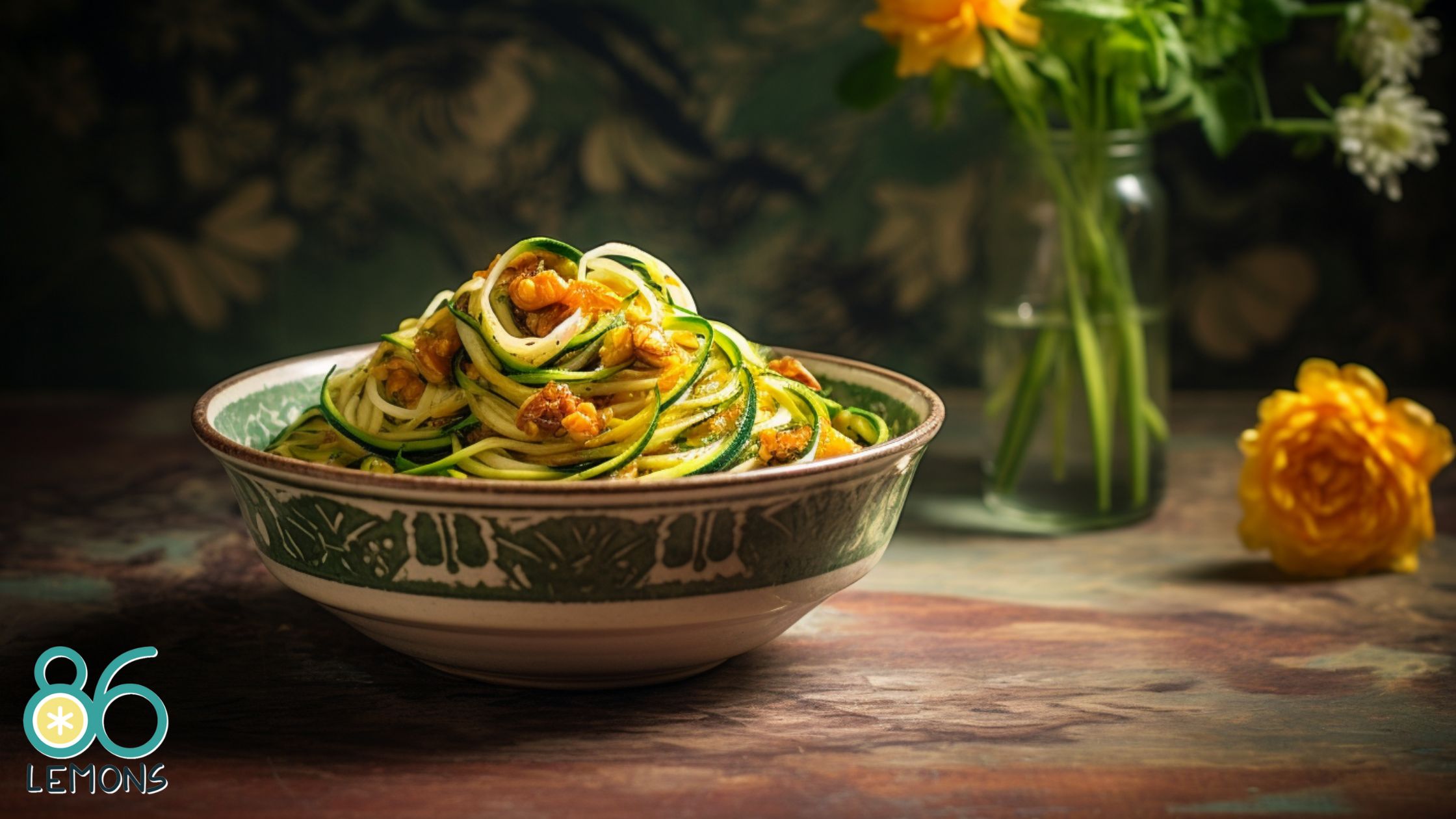Transforming an array of vibrant vegetables into noodles is a delightful way to incorporate more nutrition into your meals without sacrificing the satisfaction of a hearty pasta dish. They are a fantastic way to enjoy your favorite sauces and flavors in a new, visually appealing form that’s as fun to make as it is to eat.
Before you begin, selecting the right vegetables is key to a successful veggie noodle experience. Firm favorites such as zucchini, carrots, and butternut squash lend themselves exceptionally well to spiralizing, making them a perfect noodle for ramen and other dishes.
The straightforward process can be achieved with a few essential kitchen tools. Once you learn how to make veggie pasta noodles, the possibilities for seasoning, cooking, and serving are nearly endless, allowing for creativity in the kitchen and customization to your dietary preferences.
Key Takeaways
- Veggie noodles are a nutritious and adaptable substitute for conventional pasta.
- Selecting firm vegetables and using the right tools are vital for creating perfect veggie noodles.
- These noodles can be tailored with various flavors and sauces, suiting multiple dietary needs.
Choosing Your Vegetables
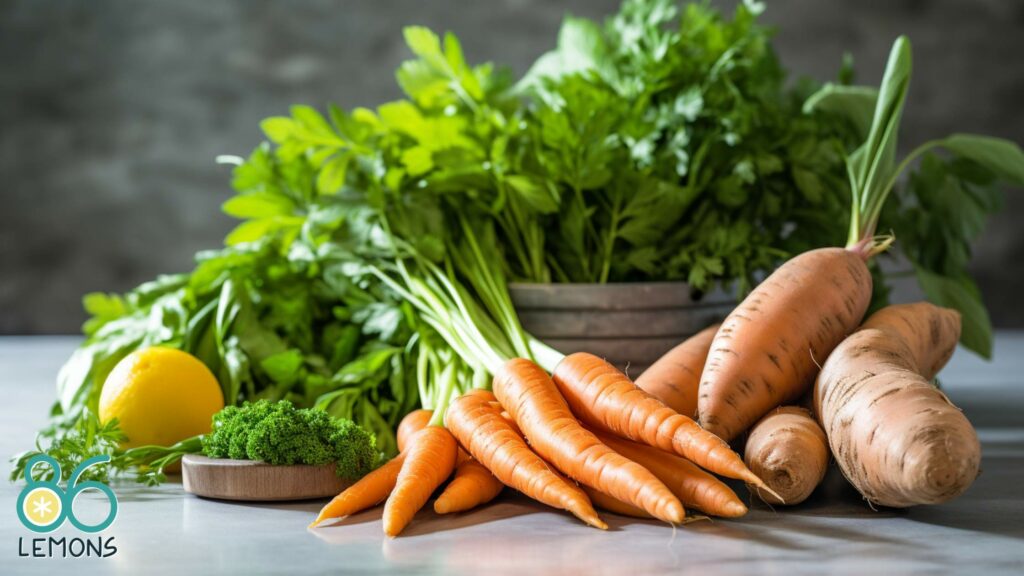
When diving into the world of veggie noodles, the freshness and quality of your vegetables are crucial. This will ensure the best texture and the brightest flavors in your dishes.
Opt for Fresh, Firm Vegetables
For the most satisfying veggie noodles, you want to start with fresh and firm vegetables. These vegetables will hold up better when spiralized or cut into noodles.
Consider versatile options like zucchini, yellow squash, and cucumber, as they are easy to handle and create uniform strands. Root vegetables like carrots, sweet potatoes, and beets make firm noodles but require more pressure when spiralizing.
- Zucchini: Creates soft, flexible noodles.
- Carrots: Firm texture, good for crunch
- Sweet Potatoes: Heartier, with a slight sweetness
- Cucumber: Perfect for a refreshing, cool dish and low on calories
- Beets: Sturdy, with an earthy flavor
Selecting Vegetables for Color and Flavor
Add excitement to your plate by choosing vegetables that will bring color and flavor to your dish. Bright bell peppers can add a sweet, slightly crisp element, while dark greens like spinach and kale will contribute to earthiness and make your meal visually appealing.
- Red Pepper: Adds sweetness and vibrant color
- Kale: A deep green that offers a robust flavor
- Butternut Squash: Sweet and pleasing to the eye with some antioxidants
- Cauliflower: Great for adding bulk without overpowering other flavors
- Spinach: Wilts nicely into dishes and provides a pop of color
Selecting a variety of colors makes your plate more visually appealing and ensures you get a range of nutrients. Remember, the more colorful your meal, the broader the spectrum of vitamins and antioxidants you’ll likely consume.
Essential Tools for Making Veggie Noodles

You’ll need the right tools to transform your favorite veggies into delicious noodles. Whether you prefer spiraled zucchini or julienne carrots, these gadgets will make the process quick and easy.
Using a Spiralizer
A spiralizer is your go-to tool for creating perfect veggie noodles. It secures the vegetable and spins it through a blade, producing long, pasta-like strands.
Several types of spiralizers exist, from hand-held models to those that attach to your countertop or kitchen stand mixer. Look for one with multiple blade options to get different noodle shapes.
Alternative: Julienne Peeler
A julienne peeler is a handy alternative for a quick and simple solution. It’s similar to a regular vegetable peeler but has serrated blades that cut vegetables into long, thin strips, much like matchsticks.
This tool is compact, easy to handle, and perfect for softer veggies like zucchini or cucumber.
Alternative: Mandoline Slicer
Lastly, a mandoline slicer can slice vegetables into flat noodle shapes, such as potatoes or beets. It’s versatile and often comes with a julienne blade, too. When using a mandoline, always be cautious and use the hand guard to protect your fingers from the sharp blades.
Prepping the Vegetables
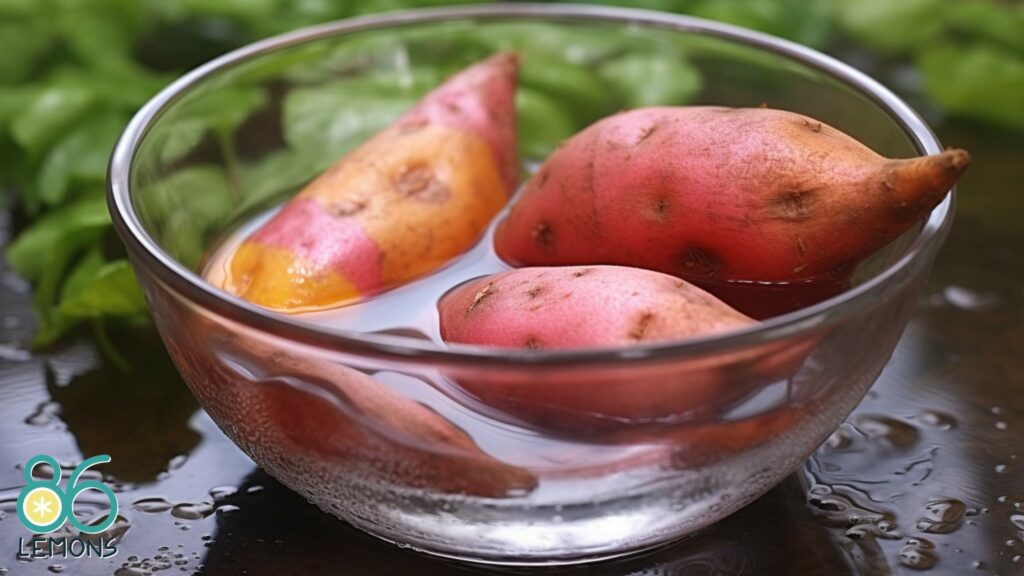
Before diving into the art of turning veggies into noodles, ensure you’ve got clean, peeled, and properly sliced produce. This step sets the stage for the perfect veggie noodles, impacting texture and flavor.
Cleaning and Peeling
First, thoroughly wash your vegetables under running water to remove dirt or debris. Vigilance in cleaning is crucial as it’s not just about cleanliness but also about ensuring the flavors in your veggie noodles are pure.
For peeling, you’ll need a reliable peeler. Peel the skin off, especially for veggies like carrots or sweet potatoes, to achieve a smoother noodle texture.
Trimming and Slicing
Next, trim any ends or unwanted parts of the vegetable. A clean cut is essential to fit the veggie into a spiralizer. When slicing, ensure your knife is sharp and your vegetable cutting board is stable.
Aim for consistent thickness to promote even cooking if you’re not using a spiralizer and prefer to slice by hand or with a mandoline.
Crafting the Perfect Noodle
Creating veggie noodles is both an art and a science. The trick lies in using the right cutting technique for each vegetable to achieve the perfect texture and consistency.
Cutting Techniques for Different Vegetables
To turn your veggies into noodle-like strands, the key is having the right tool for the right job.
- Zucchini Noodles (Zoodles): A spiralizer is your best friend for zucchini. Trim the ends and twist the zucchini through the spiralizer to create long, curly noodles.
- Sweet Potato Noodles: Dense vegetables like sweet potatoes require a sturdy, sharp blade. A julienne peeler or a mandoline set to a thin setting can help you make firm, yet flexible noodles.
- Carrot Noodles: Carrots are trickier, given their shape and size, but with patience, you can use a spiralizer or a peeler to create slender, colorful noodles.
Always aim for fresh, firm vegetables to ensure they hold up during the cutting process and don’t turn mushy.
Creating Uniform Strands
Consistency is key in texture and cooking times. Here’s how you can achieve uniform strands:
- Apply Even Pressure: When spiralizing or peeling, apply consistent pressure to produce even noodles.
- Select the Right Size: For larger veggies like sweet potatoes, cut them down to size first to fit your spiralizer or mandoline.
- Check the Blades: Before cutting, ensure the blades on your tools are sharp and clean to avoid jagged or uneven cutting.
By following these techniques, you’ll produce beautiful veggie noodles that are ready for your favorite sauces and seasonings.
Seasoning and Flavoring

The seasoning can elevate your veggie pasta noodles from good to great. A dash of the right herbs and a pinch of salt can make all the difference.
Simple Seasoning Blends
Start by mastering a basic seasoning blend: combine equal parts of salt, black pepper, and dried oregano. For a bit of heat, sprinkle in some red pepper flakes. These blends are versatile and can be adjusted based on your taste preferences:
- Classic Italian: Mix 1 teaspoon of salt, 1 teaspoon of black pepper, 1 teaspoon of dried oregano, and 1/2 teaspoon of red pepper flakes.
- Herb Delight: Combine 1 teaspoon of dried basil, 1 teaspoon of dried parsley, 1 teaspoon of dried cilantro, and 1/2 teaspoon of garlic powder.
Remember, start with a little and taste as you go. You can always add more, but you can’t take it out.
Boosting Flavor with Aromatics
Aromatics are your secret weapon for adding depth to your noodles. Garlic cloves, minced and sautéed in olive oil, create a fragrant base that infuses every bite with flavor. Here’s how to layer these foundation flavors:
- Warm 2 tablespoons of olive oil over medium heat.
- Add 2-3 minced garlic cloves and sauté until fragrant (about 30 seconds to a minute).
- Toss in your veggie noodles and stir to coat with the garlic-infused olive oil.
You can make your dish more complex by including fresh herbs in the last few minutes of cooking; fresh basil or parsley will impart a bright, fresh taste.
Healthy and Flavorful Sauces
When you make your veggie pasta, the sauce is where you can get creative and add a punch of flavor. These sauce options are healthy, easy to whip up and cater to various tastes.
Classic Tomato Pasta Sauce
For a Classic Tomato Pasta Sauce, start by sautéing garlic in olive oil, then add crushed tomatoes and your choice of herbs. For an extra zesty flavor, a squeeze of lemon juice does wonders.
Keep it simmering until the sauce thickens to your liking. Check out this method for adding a twist to your classic sauce.
Rich and Creamy Alfredo Variant
Next up, whip up a dairy-free Rich and Creamy Alfredo Variant. Blend soaked cashews with olive oil, garlic, and nutritional yeast for that cheesy flavor without the actual cheese.
This recipe swaps out traditional ingredients for something healthier while not compromising on the creamy texture you love. You can also opt for nutritional yeast substitutes.
Asian-Influenced Peanut Sauce
Finally, an Asian-Influenced Peanut Sauce offers a bold and nutty flavor profile that pairs perfectly with veggie noodles. A base of smooth peanut butter mixed with soy sauce, a touch of maple syrup, and a hint of ginger create a beautifully rich sauce.
Cooking Veggie Noodles
When you’re making veggie noodles, getting them just right can make or break your dish. You’ll want them tender and full of flavor without crossing over to the mushy side.
Sauteing to Perfection
To cook your veggie noodles with finesse, boil a skillet over medium heat with vegetable oil. Once it’s hot, toss in your noodles.
Sautéing helps bring out a fragrant aroma and a slight caramelization, highlighting the vegetables’ natural flavors. It’s the moment to get creative with spices or a dash of your favorite garnish to make the noodles pop.
Avoiding Overcooking
Keep a close eye on your noodles as they cook; they can go from perfect to overdone in a flash. The cooking time will vary depending on the type of veggie noodle you’re making, but generally, a few minutes should be enough.
Your aim is tender noodles that hold up on the fork without falling apart. As soon as they reach this point, take them off the heat to preserve their ideal texture.
Nutrition and Dietary Considerations
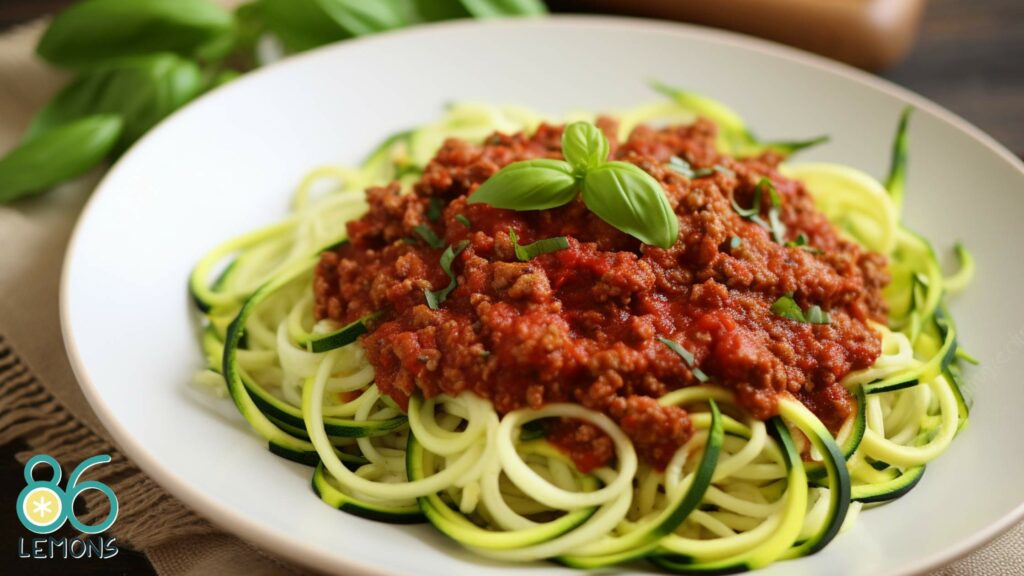
When diving into veggie pasta noodles, it’s essential to consider their nutritional impact and how they fit into various diets. Whether you’re looking at calorie count or needing gluten-free options, you’ll find veggie noodles are versatile and accommodating.
Caloric and Macronutrient Information
Veggie noodles provide a lower-calorie and nutrient-rich alternative to traditional pasta. For example, a cup of zucchini noodles (often called “zoodles”) contains around 20 calories, compared to about 220 calories in a cup of cooked spaghetti.
They also have a favorable macronutrient profile with a good dose of fiber, modest carbs, and minimal fat. Plus, they pack in some protein, which is excellent for your muscles!
Gluten-Free and Low-Carb Options
If you’re steering clear of gluten or looking to reduce carb intake, veggie noodles are your friend. They are naturally gluten-free, making them a safe choice if you have celiac disease or gluten sensitivity. For those on a low-carb diet like keto, veggie pasta is a godsend.
They have significantly fewer carbs than wheat-based pasta, with the bonus of extra nutrition info like vitamins and minerals that support your overall health.
Serving and Presentation
When you’ve got your veggie noodles cooked to perfection, presenting them with style can make all the difference. Let’s talk about how to plate and garnish them to impress.
Plating Techniques
- Consider Portion Size: Aim for 1 to 2 cups of veggie noodles per serving, ensuring each plate looks full but not overcrowded.
- Color Contrast: Use a white or lightly colored plate to make the colors of your veggie noodles pop.
- Height: Build height with your noodles instead of spreading them flat to add dimension.
Garnishes to Enhance Appearance
- Cheese: A sprinkle of vegan Parmesan cheese can add a savory note without overpowering the fresh taste of the noodles.
- Fresh Herbs: Chopped basil, parsley, or cilantro can give your dish a burst of color and fresh flavor.
- Edible Flowers: If you’re fancy, a few edible flowers can transform your dish into an artful plate.
Storing Leftovers
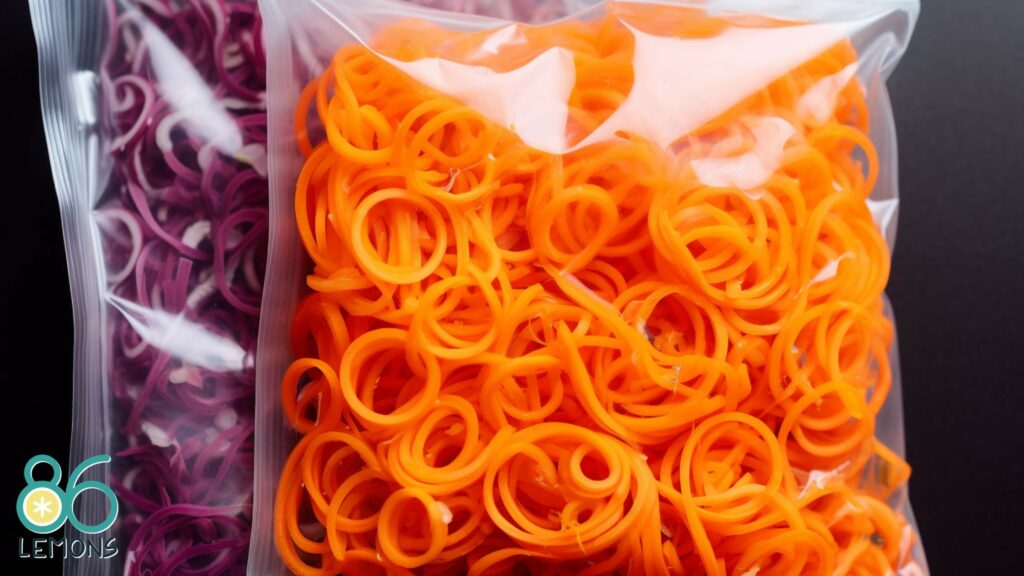
Got a fridge full of veggie pasta noodles and am unsure what to do with them. You can keep those vibrant strands tasty for the next round. Here’s how to ensure they stay just as good the second time.
Refrigeration Best Practices
Once you’ve filled it, let your pasta cool down before stashing it in the fridge. Tossing them with olive oil can keep them from sticking together.
Use an airtight container to maintain freshness—they’ll be good for around 3 to 5 days. When you’re ready for a quick meal, the leftovers can go straight from the fridge to the oven or microwave for reheating.
Freezer Storage Tips
Your veggie pasta can chill out in the freezer, too. Just ensure they’re nicely coated with oil and in a freezer-safe container. Label your pasta with the date, and you’ll have up to three months to enjoy it again.
The best part? You don’t have to thaw them out; they can be reheated directly from frozen in the oven or on the stove.
Additional Tips and Tricks

When you’re making veggie pasta noodles, there are some extra steps you can take to make the process simpler and the outcome tastier:
- One Pot Wonders: If you want a hassle-free cooking experience, try a one-pot recipe. This approach lets you cook everything together, meaning fewer dishes to wash!
- Pinterest Inspiration: Pinterest is a goldmine for creative veggie noodle recipes. You’ll find inventive combinations that might just become your new favorites. Search for terms like “veggie noodle recipes” or “one-pot veggie pasta” to start your exploration.
- Baked Tofu Add-In: Want to add some protein to your veggie noodles? Toss in some baked tofu. Cube tofu, bake it until it’s crispy, and then add it to your noodles just before serving for a satisfying crunch.
- Cauliflower Rice Finale: For an interesting texture contrast, sprinkle some cauliflower rice towards the end of cooking. It adds volume and soaks up the flavors of your dish.
Remember, the key to great veggie noodles is not overcooking them. You want them to have a nice crunch akin to al dente pasta. And don’t be afraid to experiment. Veggie noodles are a fantastic canvas for your culinary creativity!

